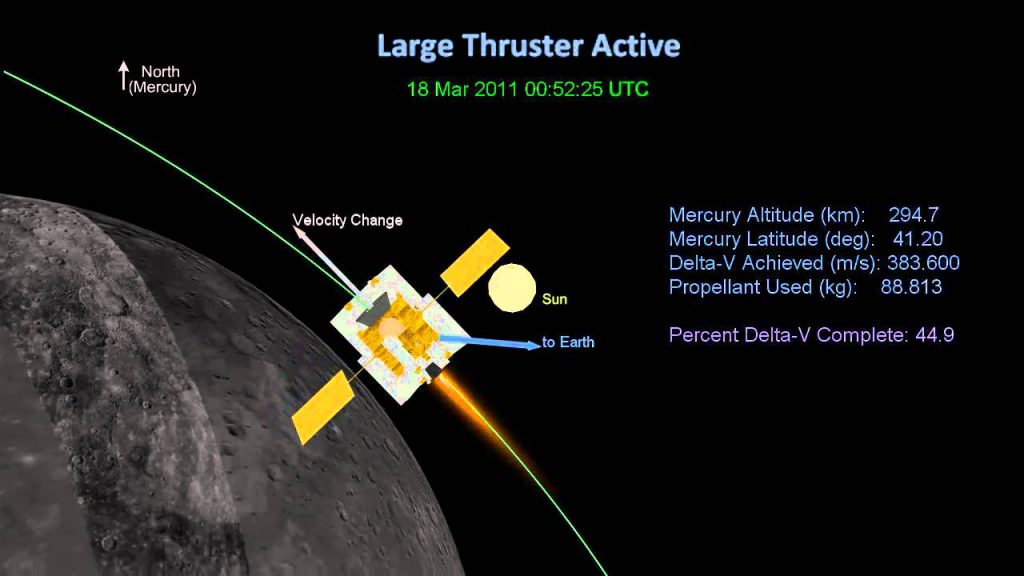
Messenger Spacecraft Getting Ready for Insertion into Mercury Orbit
by Alton Parrish
March 10, 2011
On March 17, the MESSENGER spacecraft will execute a 15-minute maneuver that will place it into orbit about Mercury, making it the first craft ever to do so, and initiating a one-year science campaign to understand the innermost planet.
Starting today, antennas from each of the three Deep Space Network (DSN) ground stations will begin a round-the-clock vigil, allowing flight control engineers at the Johns Hopkins University Applied Physics Laboratory (APL) in Laurel, Md., to monitor MESSENGER on its final approach to Mercury.
At 10:40 a.m. this morning, the spacecraft began executing the last cruise command sequence of the mission. This command load will execute until next Monday, when the command sequence containing the orbit-insertion burn will start.
This animation [above] shows the expected spacecraft orientation, thruster activity, and location relative to Mercury during the Mercury orbit insertion maneuver on March 18, 2011.
“This is a milestone event for our small, but highly experienced, operations team, marking the end of six and one half years of successfully shepherding the spacecraft through six planetary flybys, five major propulsive maneuvers, and sixteen trajectory-correction maneuvers, all while simultaneously preparing for orbit injection and primary mission operations,†says MESSENGER Systems Engineer Eric Finnegan. “Whatever the future holds, this team of highly dedicated engineers has done a phenomenal job methodically generating, testing, and verifying commands to the spacecraft, getting MESSENGER where it is today.â€
The mission operations team now turns its attention to the final preparations for the insertion burn next week and establishing nominal operations for the primary mission. As with the last three approaches to Mercury, the navigation team and the guidance and control team have been successfully using the solar radiation of the Sun to carefully adjust the trajectory of the spacecraft toward the optimum point in space and time to start the orbit-insertion maneuver.
As of the most recent navigation report on February 22, the spacecraft was less than 5 kilometers and less than three seconds from the target arrival point.

